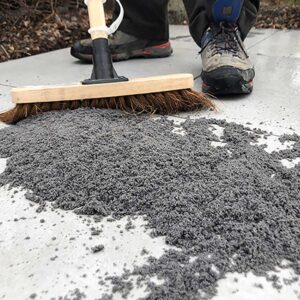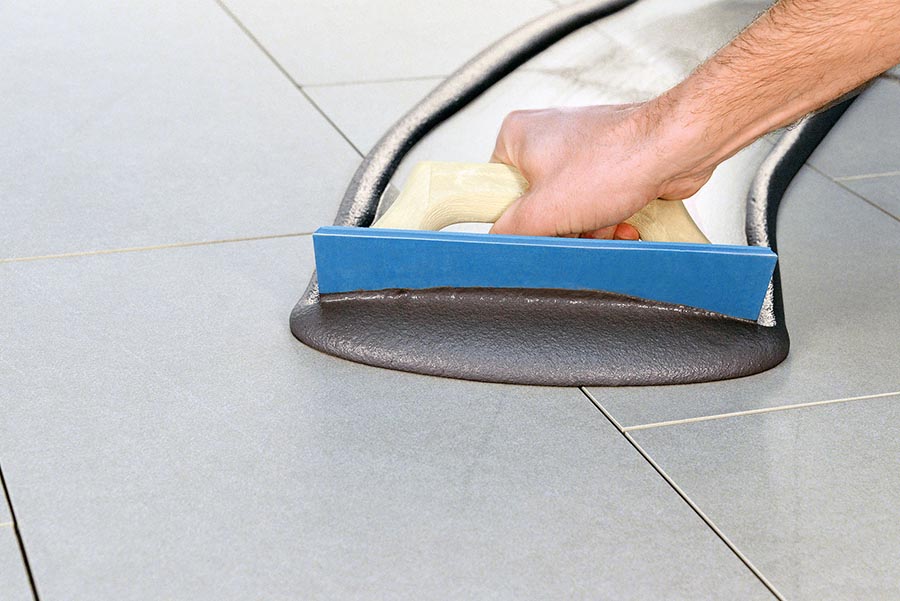Grouting is a crucial step in any tiling project, ensuring durability and a clean finish. This comprehensive guide will cover everything you need to know about grouting, from selecting the right grout to sealing and maintaining it.
What Grout to Use in a Shower?
For shower areas, it’s essential to use a grout that is water-resistant and mould-resistant. We recommend using a high-quality epoxy grout or a cement-based grout with added polymers. These grouts provide excellent durability and are resistant to the constant moisture present in showers.
What Grout for Porcelain Slabs?
For porcelain slabs, you should use a grout that matches the durability and density of the tiles. A cement-based grout with added polymers or an epoxy grout is ideal. These grouts will handle the low porosity and high density of porcelain slabs effectively.
What Kind of Grout for Outdoor Areas?
Outdoor areas require grout that can withstand the elements. Use a grout specifically designed for exterior use, such as a cement-based grout with added polymers for flexibility and weather resistance. Epoxy grout is also a good option due to its durability and resistance to weathering. You can also use a brush in grout.
What Grout for a Wetroom?
In a wet room, use a waterproof grout to prevent water ingress and mould growth. Epoxy grout is the best choice for wet rooms as it provides a waterproof seal and is highly resistant to mould and mildew.
What Grout for a Steam Room?
For steam rooms, where temperatures and humidity are consistently high, epoxy grout is the preferred choice. Its waterproof and durable properties make it ideal for the extreme conditions of a steam room.
Should I Get My Grout Sealed?
Yes, sealing your grout is a good practice to enhance its durability and resistance to stains and moisture. Use Tilemaster Global Grout Sealer to protect your grout and extend its lifespan.
Why Does Grout Colour Change or Appear Streaky?
Grout colour can change or appear streaky due to various reasons, including improper mixing, inconsistent application, or excessive water during clean up. Ensure you follow the manufacturer’s instructions carefully and maintain consistent techniques throughout the process.
How to Clean Grout?
To clean grout, use a specialized grout cleaner like Lithofin KF Grout Cleaner. This cleaner effectively removes dirt, stains, and mildew without damaging the grout.
What Types of Grout Are There and Which Should I Use?
- Cement-Based Grout: Commonly used for most tiling projects. Available in sanded and unsanded varieties.
- Epoxy Grout: Waterproof and highly durable, ideal for areas exposed to moisture.
Choose the grout type based on the specific requirements of your project.
How Much Grout Do I Need?
The amount of grout needed depends on the size of the tiles and the width of the grout lines. Generally, a standard 1 kg of grout covers about 1 square meter of tiles with 2-3 mm grout lines. Always check the manufacturer’s guidelines for accurate measurements.
Tools and Materials You Will Need
- Grout
- Grout Float
- Mixing Bucket
- Grout Mixing Paddle
- Grout Sponge or Washboy
- Epoxy Residue Remover (if using epoxy)
- First Wash Grout Remover
- Grout Sealer
Step-by-Step Guide to Grouting
1. Mix the Grout
In a mixing bucket, combine the grout powder with water (or the recommended liquid) as per the manufacturer’s instructions. Use a grout mixing paddle to ensure a smooth, lump-free consistency.
2. Apply the Grout
Using a grout float, spread the grout over the tiles, pressing it into the joints at a 45-degree angle. Make sure all joints are completely filled.
3. Clean the Tiles
Once the grout begins to set, usually after about 15-30 minutes, use a grout sponge or washboy to wipe off the excess grout from the tile surfaces. Be careful not to remove grout from the joints.
4. Final Cleaning
After the grout has fully cured, typically 24 hours, perform a final cleaning with Tilemaster Global First Wash Grout Remover.
5. Seal the Grout
Apply Tilemaster Global Grout Sealer to the grout lines to protect them from stains and moisture.
How to Use Brush-In Grout for Outdoor Tiling

Brush-in grout is an easy-to-use option for outdoor paving and patios. Here’s how to use it:
- Clean the Area: Ensure the surface is clean and dry.
- Wet the surface: Wet the surface before applying the grout.
- Apply Grout: Pour the brush-in grout onto the surface.
- Work Into Joints: Use a broom or brush to sweep the grout into the joints.
- Compact the Grout: Press the grout firmly into the joints with a trowel.
- Clean Excess Grout: Sweep away any excess grout from the surface.
- Cure the Grout: Allow the grout to cure as per the manufacturer’s instructions.
Conclusion
By following these steps and using the recommended products, you can achieve a professional grouting job that is both durable and aesthetically pleasing. For all the products mentioned, visit the Tilers Hub for more information and to purchase the necessary materials.
